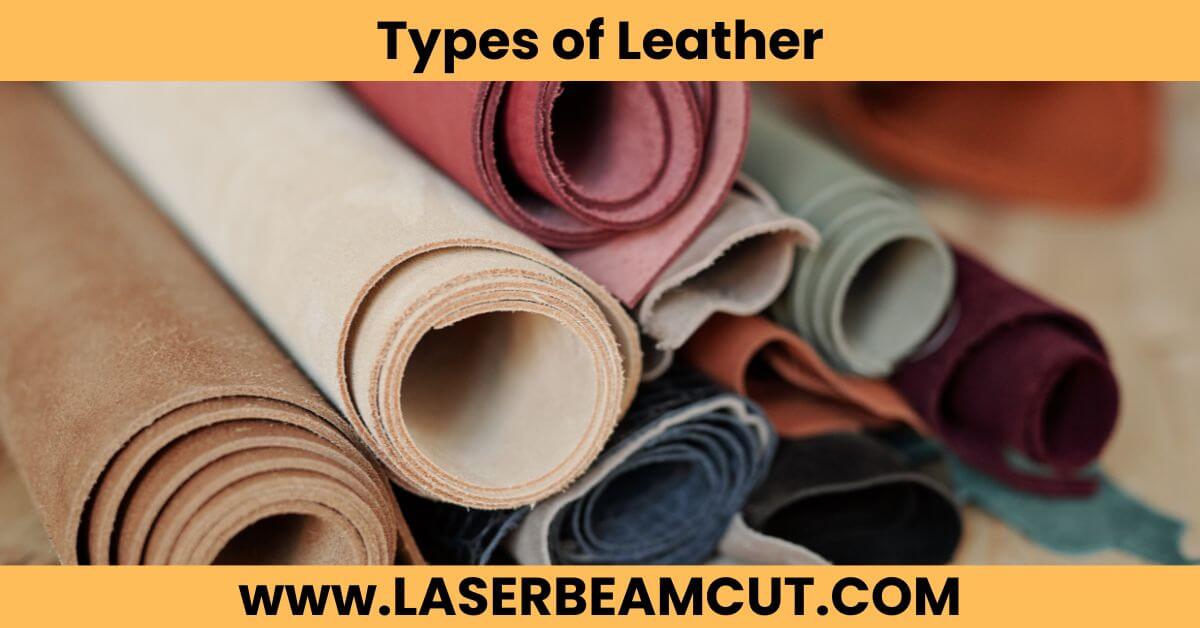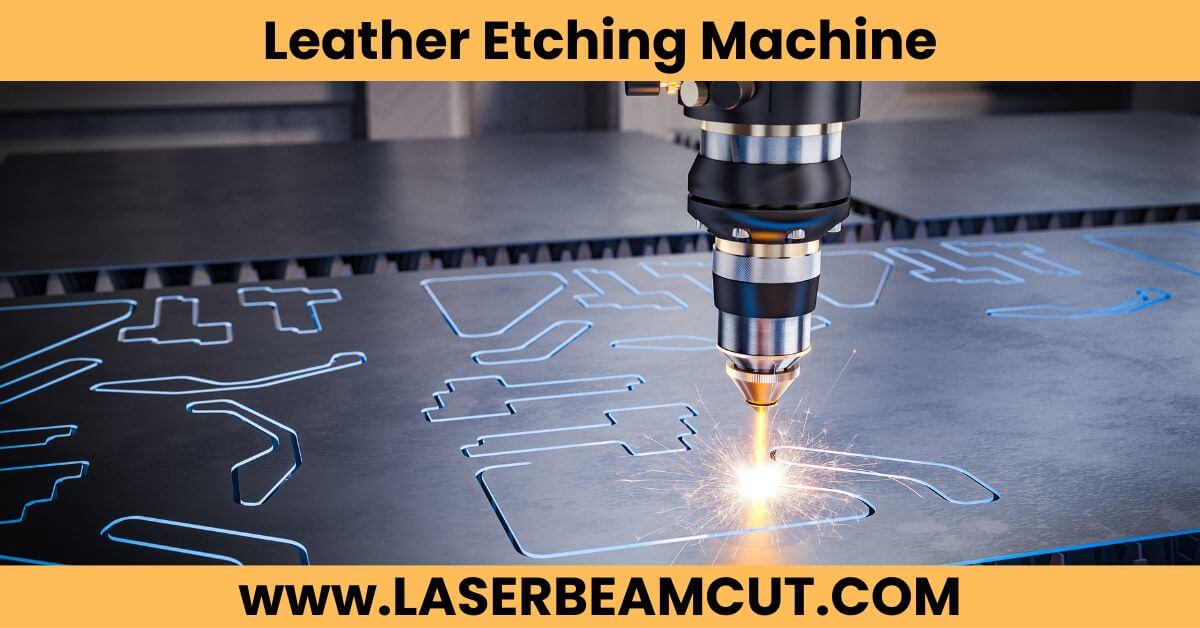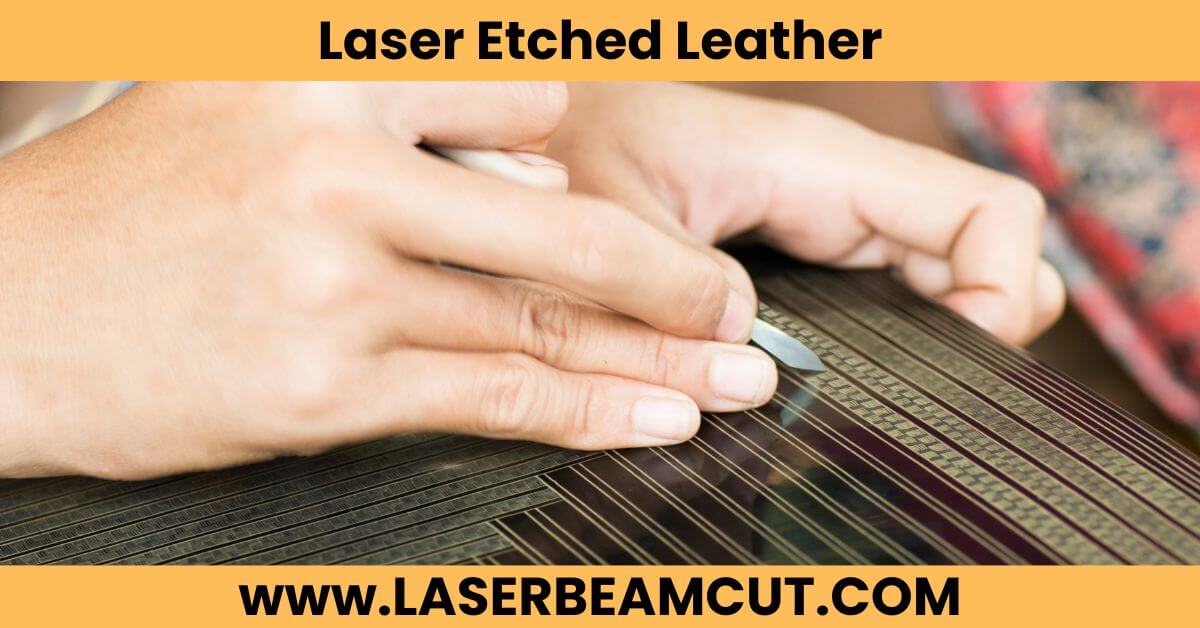Are you excited to learn about laser etched leather? Are you confused about lasering operations such as etching, engraving, and cutting of leather materials? This guide helps you in all related aspects.
These all are similar processes but with a few differences. Etching involves reaching the material to its melting point by heating it with lasers, while the engraving and cutting process turns materials into their evaporating phase.
This guide helps you to understand laser etched leather. We will also relate all their similar operations to make concepts clear.
Laser Etched Laser
It is a process in which a laser beam heats the leather material to its melting temperature. Then the machine’s air assist helps to take out its molton stuff out of the machine box.
Leather consists of different types based on animal skins. Each type behaves differently under lasers as each has different melting temperatures.
Having in-depth knowledge about its types helps us to get the best results from it. Let’s learn about its types in detail.
Types of Leather
Leather is a versatile material prized for its durability, comfort, and timeless appeal. It is primarily derived from the hides and skins of animals, with cattle being a common source. Leather comes in various types, each with distinct characteristics and uses. A brief description of various types of leathers available in the market is as follows:

Full-grain leather:
Full-grain leather, renowned for its exceptional quality. It is crafted from the uppermost layer of the hide. It preserves the inherent grain patterns and imperfections.
The full-grain enhances its durability and promotes graceful aging with time. This type of leather finds its predominant application in premium-grade products.
Top-grain leather:
Top-grain leather is also made from the top layer but is sanded and treated to remove imperfections. It’s smooth, pliable, and commonly used in furniture, wallets, and belts.
Genuine leather:
Genuine leather is a broad term, and it refers to real leather that’s not the top layer. It can vary in quality, with some products being quite durable while others are less so. People often use it in upholstery and accessories.
Bonded Leather:
Bonded leather is crafted by binding together leather scraps using adhesive and then applying a layer of polyurethane. While it offers affordability, it generally exhibits lower durability compared to other leather types.
Nubuck Leather:
Nubuck leather is crafted from top-grain leather that undergoes a sanding process to achieve a luxurious velvety surface. While it possesses a soft and appealing texture, it demands meticulous care to safeguard against stains and scuffs.
It finds frequent application in the production of shoes and handbags.
Suede Leather:
Suede is made from the underside of the hide and is known for its soft, fuzzy texture. It’s less durable than full-grain leather and requires special care to maintain its appearance. Often used in clothing and accessories.
Exotic leather:
Exotic leather includes materials like alligator, crocodile, ostrich, and snake skin. These leathers are unique and luxurious, with distinct textures and patterns. High-end fashion and accessories frequently use them.
Vegan leather:
It is a synthetic alternative, appealing to those seeking cruelty-free options in fashion and accessories.
These types of leather are not suitable for laser engraving. It is due to vinyl content in the composition of products that can produce harmful fumes under lasering operations.
Laser Machines for Etching Leather
We have a lot of options to etch leather with laser machines. It comes in fiber, Diode, and CO2 lasers with different power ratings.

Leather is non-metal, so a CO2 laser etcher machine with 40W power is best for it. We can perform etching, engraving, and cutting of leather on the same machine.
Difference between Laser Etching versus engraving and cutting Leather
A single laser machine can perform all these processes. A small differences in their process are
- Etching – A process in which material produces etched marks by melting its surface
- Engraving – Evaporating the material surface produces designs in this process.
- Cutting – A process in which cut through material by evaporating the surface
- Marking – A process in which mark the surface without removing any material
Note: Embossing leather is a similar labeling process but it would not be possible with lasers. So mechanical punch tools, embossed leather to make designs on the surface.
Final Wording
Labeling leathers is necessary for identifying purposes. We can go with a laser etched leather process or with an engraving process.
These are similar processes with small operational differences. Normal conditions cannot wear off engraved or etched leathers; they leave permanent marks.
I highly recommend going with a CO2 etcher with at least 40W power. It gives precise and detailed etching on the surface.
FAQs
1) What is the difference between laser etching and engraving of leather?
Ans: Both processes label the material for printing designs on it. The etching process left marks by reaching materials to their molton phase while the engraving process left marks by evaporating the surface.
2) Is it possible to engrave, etch, or cut leather with the same laser machine?
Ans: Yes, It is possible to engrave, etch, or cut leather with the same laser machine.
3) Why do you recommend a CO2 etcher with at least 40W to etch leather?
Ans: Leather is a hard material. So, the machine needs high energy to reach its melting temperature. If we go with less power machines, it will take more time to etch and give unacceptable results.

